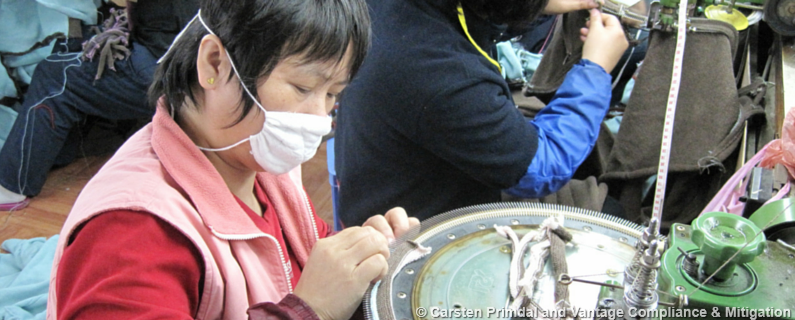The recent Climate Change Accord is historic. On December 12, in Paris, France, 195 nations united to sign a global climate change pact. As of that date, almost every country in the world has agreed to actively pursue reducing their national greenhouse gas emissions in a global effort to prevent the earth’s surface temperature from rising above the 2°C (3.6°F) threshold that signals global climate disaster. Not the least significant aspect of the pact: China is in on the deal.
Globally, Industry Has Trumped Environment:
Just five years ago, such an agreement appeared impossible. Then-existing political forces in numerous countries were against any agreement that would limit their capacity to build their industrial infrastructure. For many of those countries, including China, carbon-based fuels were believed to be the only energy sources available in sufficient quantities to provide that massive manufacturing impetus.
Since then, regimes have changed, and environmental disasters tied to climate change have caused thousands of deaths and billions of dollars in damages. In Brazil last month, millions of tons of contaminated water flooded from a collapsed dam, killing people and livestock and poisoning an entire riverway. (although the Brazilian authorities are still in the process of determining the facts surrounding the cause of the failure and who should be held liable for the damages and losses it created, they have taken legal steps to freeze assets of the parent companies of the responsible JV who caused the disaster).
International Supply Chains are Always at Risk:
The agreement to reduce its reliance on fossil fuels (coal, primarily, in many of China’s industrial provinces) is significant, but it also raises the question: “how does China plan to do that?” For international corporations that have existing contracts in China’s megalithic manufacturing sector, the change in direction of China’s government should signal the need for a review for changes in risk levels in all aspects of their supply chain network, in order to be prepared for incoming alterations in processes.
Up till now, every international producer in China should have been closely watching every factory and plant for risks of contractual or regulatory failures. However, a recent study by Britain’s Global Supply Chain Institute revealed that an astonishing number of supply chain industry executives simply don’t assess risk at all as an essential element in the cost of doing business. Of the 110 respondents to a study done by Risk and Insurance Magazine, none rated their company as “highly effective” at managing the risks inherent in their supply chains. The study concluded that, for a typical supply chain manager, only 25% of the end-to-end supply chain process was assessed in any way for risk.
And the type of risks being assessed – or not – are significant, too. The risk of loss or damage to parts or materials can usually be quantified sufficiently by assessing costs to replace or repair. The risk of injuries or potential deaths by production, materials or processes creates a greater potential for corporate failure and is much less easy to quantify. The risk of liability for failures anywhere down the chain in materials, parts, products or processes can lead to devastating economic consequences over which a manufacturer may have no control. Often, as was the case in the Brazil dam failure, it is this greatest, yet least managed, risk of liability that can cause the demise of even the largest corporation.
China is Already Moving Toward Environmental Cleanup:
In fact, China is already shifting some of its energy sources over to cleaner, renewable ones. China’s air quality and the environmentally disastrous atmospheric state of many of China’s cities compelled the government to create a new Climate Prediction System, to measure and control dust and haze, and prevent natural disasters caused by adverse climate conditions.
And, for the first time in decades, in 2014, China’s total, national volume of coal consumption declined. According to a study from the Institute for Energy Economics and Financial Analysis (IEEFA), China’s use of coal may have peaked in 2013. The U.S. government is reporting similar data. In its place, China is actively pursuing solar and wind energy sources.
It is certain that China has a long way to go before it can claim to be thoroughly environmentally appropriate in any of its systems. For decades, the state has permitted its burgeoning industrial might to eclipse its environmental priorities, leaving much of the country now in polluted devastation. What is refreshing is its public announcement that it intends to clean itself up and participate as a more environmentally responsible member of the global commercial community. In doing so, China may yet retain its place at the top of the world’s supply chain industry.
As that process moves forward, corporations who use Chinese off-shore sources for any aspect of their supplies or materials chains would be wise to implement a comprehensive review of each existing element for potential risks of loss, damage, injury, death or liability.
For assistance in accurately interpreting what your supply chain data is showing you, contact me today.
Please leave a comment or get in touch with your thoughts and your feedback.
You might also want to read some of my other blogs. A sample of recent blogs can be found here:
China’s Environmental Challenges – Part II
Environmental Disasters Cause Economic Disasters
Regional Variations Will Impact Rollout of China’s Two-Child Rule – Part 2
Two-Child Policy May Open New Economic Doors in China – Part 1
“Red Flag”: Reducing Risks in your China Supply Chain
Flexiblity of Chinese Import Suppliers Will Weather Changes in Global Manufacturing Sector
Communication and Relationships Smooth the Process of Importing From China
Protect Your Manufacturing Outcomes By Avoiding Product Delays and Failures
Reputable Chinese Suppliers Maintain China’s Industrial Reputation
China’s Economic Overhaul Will Improve Global Supply Chains
Manufacturing Compromises Can Ruin Your Brand
Tenacity and Communications Reduce Risk of Chinese Child Labour Law Violations
Safety Study Identifies Chinese Supply Factory Risks
China Manufacturing Industry Challenges Trigger Inspections, Consequences
Risk Mitigation Can Prevent Chinese Supply Chain Disruption
Tips and Traps of Contracting in China
Keeping Your Supply Chain Green: Avoiding the Environmental Polluters when sourcing in China
Ensure Timely Contract Compliance with a Chinese Supply Chain Expert
Two Key Questions To Answer Before Onboarding Your Chinese Manufacturing Supplier
Off-Shore Manufacturer’s Certificates Require Credibility
Factory Planning Principles Improve Supply Chain Quality
Mitigating Risk of Quality Fade in Overseas Manufacturing Facilities
How to Assure your “Green” Supply Chain in China
ChAFTA Opens Doors for increase in China-Australia Business relations
China Verification for Your Manufacturing Supplier Needs
Australian Industry Agreements Encourage More Chinese Factory Verifications
China Factory Verification: Check Before You Buy
Frozen berry recall highlights potential supply chain risks in offshore production
Environmental Disasters Cause Economic Disasters
Regional Variations Will Impact Rollout of China’s Two-Child Rule – Part 2
Two-Child Policy May Open New Economic Doors in China – Part 1
“Red Flag”: Reducing Risks in your China Supply Chain
Flexiblity of Chinese Import Suppliers Will Weather Changes in Global Manufacturing Sector
Communication and Relationships Smooth the Process of Importing From China
Protect Your Manufacturing Outcomes By Avoiding Product Delays and Failures
Reputable Chinese Suppliers Maintain China’s Industrial Reputation
China’s Economic Overhaul Will Improve Global Supply Chains
Manufacturing Compromises Can Ruin Your Brand
Tenacity and Communications Reduce Risk of Chinese Child Labour Law Violations
Safety Study Identifies Chinese Supply Factory Risks
China Manufacturing Industry Challenges Trigger Inspections, Consequences
Risk Mitigation Can Prevent Chinese Supply Chain Disruption
Tips and Traps of Contracting in China
Keeping Your Supply Chain Green: Avoiding the Environmental Polluters when sourcing in China
Ensure Timely Contract Compliance with a Chinese Supply Chain Expert
Two Key Questions To Answer Before Onboarding Your Chinese Manufacturing Supplier
Off-Shore Manufacturer’s Certificates Require Credibility
Factory Planning Principles Improve Supply Chain Quality
Mitigating Risk of Quality Fade in Overseas Manufacturing Facilities
How to Assure your “Green” Supply Chain in China
ChAFTA Opens Doors for increase in China-Australia Business relations
China Verification for Your Manufacturing Supplier Needs
Australian Industry Agreements Encourage More Chinese Factory Verifications
China Factory Verification: Check Before You Buy
Frozen berry recall highlights potential supply chain risks in offshore production
I am also offering a free excerpt of my book, which you can download here.



